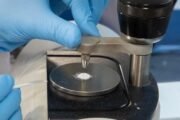The MIPI Alliance has announced a significant upgrade to its automotive high-speed asymmetric serializer-deserializer (SerDes) physical-layer interface, known as MIPI A-PHY. The latest version, A-PHY v2.0, doubles the maximum available downlink data rate from 16 Gbps to 32 Gbps on a single channel. This enhancement is designed to support the increasing bandwidth requirements for next-generation vehicle architectures, including advanced driver-assistance systems (ADAS), digital cockpits, and autonomous driving systems (ADS). This article explores the key features of A-PHY v2.0, its impact on the automotive industry, and the future prospects of this technology.

Key Features of A-PHY v2.0
MIPI A-PHY v2.0 introduces several forward-looking enhancements to meet the evolving needs of the automotive industry. One of the most notable features is the support for higher data rates, with the addition of two new gears, G6 and G7, which use PAM8 and PAM16 encoding to achieve speeds of 24 and 32 Gbps, respectively. This increase in data rate is crucial for supporting the higher bandwidth requirements of modern vehicle systems.
The new version also includes a faster uplink gear, capable of supporting up to 1.6 Gbps, which is more than eight times the data rate of the previous uplink gear. This enhancement provides support for symmetrical 1 Gbps Ethernet channels over A-PHY links, enabling efficient command and control of automotive peripherals. The improved uplink speed is essential for real-time data transmission and communication within the vehicle’s electronic control units (ECUs).
Additionally, A-PHY v2.0 maintains the high reliability and noise immunity that the MIPI A-PHY standard is known for. It offers an ultra-low packet error rate of 10^-19 over a vehicle’s lifetime and supports a reach of up to 15 meters. These features ensure robust performance and reliability, even in the demanding automotive environment.
Impact on the Automotive Industry
The introduction of MIPI A-PHY v2.0 is expected to have a significant impact on the automotive industry. By doubling the maximum data rate, the new standard enables the integration of a greater number of sensors and displays within the vehicle. This is particularly important for advanced driver-assistance systems (ADAS) and autonomous driving systems (ADS), which rely on high-speed data transmission for real-time processing and decision-making.
The enhanced data rates also support the development of modern digital cockpits and in-vehicle infotainment (IVI) systems. These systems require high-bandwidth connections to deliver seamless and immersive experiences to drivers and passengers. With A-PHY v2.0, automakers can design more sophisticated and feature-rich vehicle interiors, enhancing the overall driving experience.
Furthermore, the improved uplink capabilities of A-PHY v2.0 facilitate better communication between the vehicle’s ECUs and peripheral devices. This is essential for the efficient operation of various vehicle systems, including safety features, navigation, and entertainment. The ability to transmit data at higher speeds and with greater reliability ensures that these systems function optimally, contributing to the safety and comfort of the vehicle.
Future Prospects and Industry Adoption
Looking ahead, the adoption of MIPI A-PHY v2.0 is expected to accelerate as automakers and suppliers recognize the benefits of the enhanced standard. The backward compatibility with previous versions of A-PHY ensures a smooth transition for manufacturers, allowing them to upgrade their systems without significant disruptions. This compatibility also facilitates the coexistence of devices using different versions of the standard on the same network, providing flexibility in system design.
The MIPI Alliance’s commitment to continuous improvement and innovation positions A-PHY as a key enabler of future automotive technologies. As the industry moves towards software-defined vehicles (SDVs) and zonal architectures, the need for high-speed, reliable data transmission will only increase. A-PHY v2.0 is well-equipped to meet these demands, supporting the development of next-generation vehicle systems.
In conclusion, the release of MIPI A-PHY v2.0 marks a significant milestone in the evolution of automotive data transmission standards. With its enhanced data rates, improved uplink capabilities, and robust performance, A-PHY v2.0 is set to play a crucial role in the advancement of automotive technology. As the industry continues to innovate, the adoption of this standard will drive the development of safer, smarter, and more connected vehicles.















